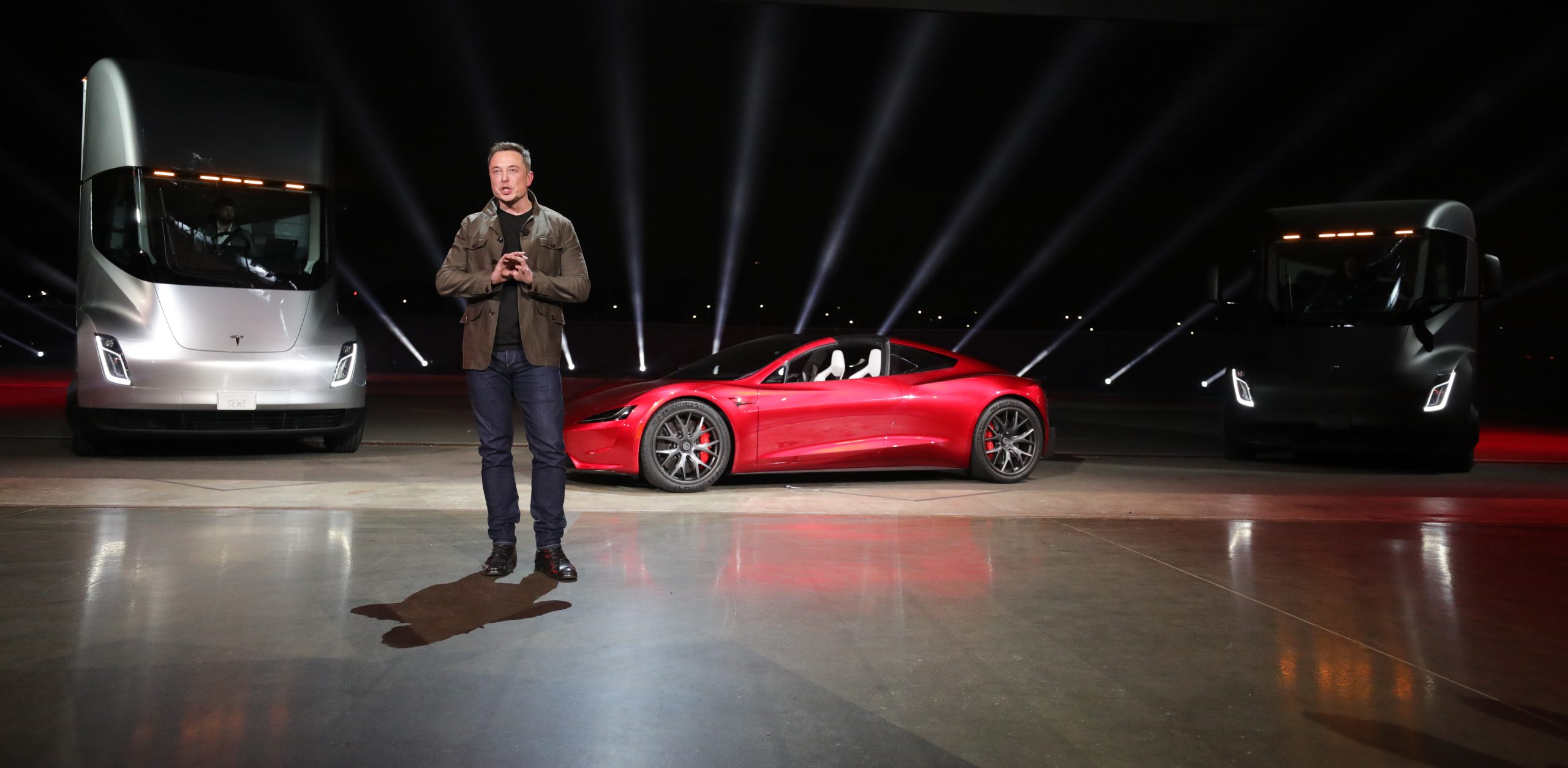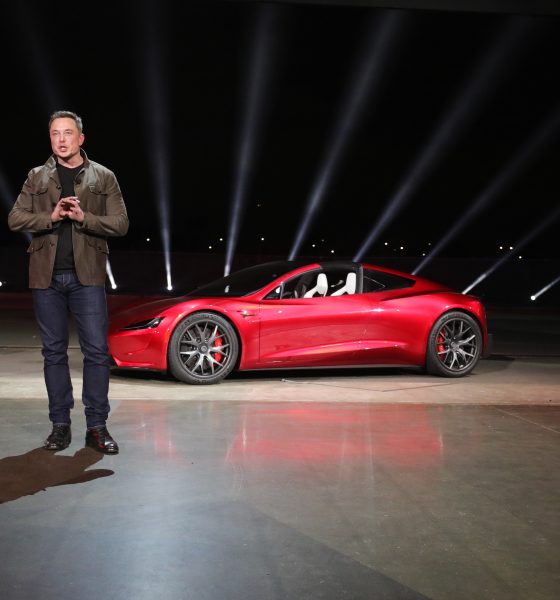

News
Elon Musk’s updates to Tesla Battery Day show we have no idea what will happen
Tesla’s Battery Day is less than a month away, and there is no shortage of speculation for what might be unveiled at the event. Numerous attempts to uncover subliminal messages within Tesla’s announcements and other related topics of discussion have been shot down by CEO Elon Musk, relatively confirming the fact that, as a community, we have no idea what will go down on September 22nd.
Battery Day is arguably Tesla’s most anticipated event because of the significance it holds for the company’s future development. Not only could Tesla revolutionize the way electric cars operate, but it could reveal the company’s plans to reach price parity with gas vehicles. What goes down on September 22nd is going to be huge, and the EV community as a whole will be watching.
Initially, several members of the EV community had uncovered the fact that Amprius Technologies Headquarters is located right across the street from Tesla’s Kato Road Facility in Fremont, California. In fact, CleanTechnica had even revealed that there could be a link between Tesla and Amprius in an article from August 26th.
There was plenty of evidence that Tesla could be using Amprius Technologies silicon nanowire tech for its new cell developments.
However, Musk immediately shot down any speculation of the two companies being linked.
But actually nothing. Was surprised to hear they’re across the road. Adding silicon to carbon anode makes sense. We already do. Question is just what ratio of silicon to carbon & what shape? Silicon expands like crazy during discharge & comes apart, so cycle life is usually bad.
— Elon Musk (@elonmusk) August 27, 2020
To add fuel to the fire, Tesla also released a cryptic background for its Battery Day and Shareholder Meeting Livestream page, which left many people interested in what the design could mean.
For example, Electrek indicated that doing a simple reverse lookup of the image on Google revealed that it also had a similar design to silicon nanowires, which also would relate Tesla to Amprius once again.
While the EV community has been baffled by what the design is for the Battery Day and Shareholder, Musk finally provided an update on the image.
“We were too obtuse for our own good, although I think it works aesthetically,” Musk said in a Tweet that was in response to an inquiry from @WholeMarsBlog. “Those are folded-over current collectors at the top/bottom of the cell, which are important, but I don’t want to jump the gun on Sept 22,” he added.
Current collectors are crucial for enhancing the electrochemical performance of a lithium-ion battery cell. Usually made of aluminum or copper foils, the collectors are attached to binders that do not reach optimal capacity. However, a paper from Yuan Yue and Hong Liang states that when these collectors are damaged from discharge induced detachment of the cast layer, structural integrity compromisation occurs. This damage is usually the product of extended cycles of charging and can be detrimental to the lifespan of a cell.
Whether that has anything to do with what Tesla will unveil at its Battery Day event is unknown. However, speculating of what could occur is a good thing, because it allows members of the community to work together to try and decipher what could happen.
In the meantime, all attempts to unravel Tesla’s plan have been foiled by Musk, indicating that nobody really has any idea what the company has in store for the future of electric vehicles and energy storage systems.

Elon Musk
Elon Musk and Tesla AI Director share insights after empty driver seat Robotaxi rides
The executives’ unoccupied tests hint at the rapid progress of Tesla’s unsupervised Robotaxi efforts.

Tesla CEO Elon Musk and AI Director Ashok Elluswamy celebrated Christmas Eve by sharing personal experiences with Robotaxi vehicles that had no safety monitor or occupant in the driver’s seat. Musk described the system’s “perfect driving” around Austin, while Elluswamy posted video from the back seat, calling it “an amazing experience.”
The executives’ unoccupied tests hint at the rapid progress of Tesla’s unsupervised Robotaxi efforts.
Elon and Ashok’s firsthand Robotaxi insights
Prior to Musk and the Tesla AI Director’s posts, sightings of unmanned Teslas navigating public roads were widely shared on social media. One such vehicle was spotted in Austin, Texas, which Elon Musk acknowleged by stating that “Testing is underway with no occupants in the car.”
Based on his Christmas Eve post, Musk seemed to have tested an unmanned Tesla himself. “A Tesla with no safety monitor in the car and me sitting in the passenger seat took me all around Austin on Sunday with perfect driving,” Musk wrote in his post.
Elluswamy responded with a 2-minute video showing himself in the rear of an unmanned Tesla. The video featured the vehicle’s empty front seats, as well as its smooth handling through real-world traffic. He captioned his video with the words, “It’s an amazing experience!”
Towards Unsupervised operations
During an xAI Hackathon earlier this month, Elon Musk mentioned that Tesla owed be removing Safety Monitors from its Robotaxis in Austin in just three weeks. “Unsupervised is pretty much solved at this point. So there will be Tesla Robotaxis operating in Austin with no one in them. Not even anyone in the passenger seat in about three weeks,” he said. Musk echoed similar estimates at the 2025 Annual Shareholder Meeting and the Q3 2025 earnings call.
Considering the insights that were posted Musk and Elluswamy, it does appear that Tesla is working hard towards operating its Robotaxis with no safety monitors. This is quite impressive considering that the service was launched just earlier this year.
Elon Musk
Starlink passes 9 million active customers just weeks after hitting 8 million
The milestone highlights the accelerating growth of Starlink, which has now been adding over 20,000 new users per day.

SpaceX’s Starlink satellite internet service has continued its rapid global expansion, surpassing 9 million active customers just weeks after crossing the 8 million mark.
The milestone highlights the accelerating growth of Starlink, which has now been adding over 20,000 new users per day.
9 million customers
In a post on X, SpaceX stated that Starlink now serves over 9 million active users across 155 countries, territories, and markets. The company reached 8 million customers in early November, meaning it added roughly 1 million subscribers in under seven weeks, or about 21,275 new users on average per day.
“Starlink is connecting more than 9M active customers with high-speed internet across 155 countries, territories, and many other markets,” Starlink wrote in a post on its official X account. SpaceX President Gwynne Shotwell also celebrated the milestone on X. “A huge thank you to all of our customers and congrats to the Starlink team for such an incredible product,” she wrote.
That growth rate reflects both rising demand for broadband in underserved regions and Starlink’s expanding satellite constellation, which now includes more than 9,000 low-Earth-orbit satellites designed to deliver high-speed, low-latency internet worldwide.
Starlink’s momentum
Starlink’s momentum has been building up. SpaceX reported 4.6 million Starlink customers in December 2024, followed by 7 million by August 2025, and 8 million customers in November. Independent data also suggests Starlink usage is rising sharply, with Cloudflare reporting that global web traffic from Starlink users more than doubled in 2025, as noted in an Insider report.
Starlink’s momentum is increasingly tied to SpaceX’s broader financial outlook. Elon Musk has said the satellite network is “by far” the company’s largest revenue driver, and reports suggest SpaceX may be positioning itself for an initial public offering as soon as next year, with valuations estimated as high as $1.5 trillion. Musk has also suggested in the past that Starlink could have its own IPO in the future.
News
NVIDIA Director of Robotics: Tesla FSD v14 is the first AI to pass the “Physical Turing Test”
After testing FSD v14, Fan stated that his experience with FSD felt magical at first, but it soon started to feel like a routine.

NVIDIA Director of Robotics Jim Fan has praised Tesla’s Full Self-Driving (Supervised) v14 as the first AI to pass what he described as a “Physical Turing Test.”
After testing FSD v14, Fan stated that his experience with FSD felt magical at first, but it soon started to feel like a routine. And just like smartphones today, removing it now would “actively hurt.”
Jim Fan’s hands-on FSD v14 impressions
Fan, a leading researcher in embodied AI who is currently solving Physical AI at NVIDIA and spearheading the company’s Project GR00T initiative, noted that he actually was late to the Tesla game. He was, however, one of the first to try out FSD v14.
“I was very late to own a Tesla but among the earliest to try out FSD v14. It’s perhaps the first time I experience an AI that passes the Physical Turing Test: after a long day at work, you press a button, lay back, and couldn’t tell if a neural net or a human drove you home,” Fan wrote in a post on X.
Fan added: “Despite knowing exactly how robot learning works, I still find it magical watching the steering wheel turn by itself. First it feels surreal, next it becomes routine. Then, like the smartphone, taking it away actively hurts. This is how humanity gets rewired and glued to god-like technologies.”
The Physical Turing Test
The original Turing Test was conceived by Alan Turing in 1950, and it was aimed at determining if a machine could exhibit behavior that is equivalent to or indistinguishable from a human. By focusing on text-based conversations, the original Turing Test set a high bar for natural language processing and machine learning.
This test has been passed by today’s large language models. However, the capability to converse in a humanlike manner is a completely different challenge from performing real-world problem-solving or physical interactions. Thus, Fan introduced the Physical Turing Test, which challenges AI systems to demonstrate intelligence through physical actions.
Based on Fan’s comments, Tesla has demonstrated these intelligent physical actions with FSD v14. Elon Musk agreed with the NVIDIA executive, stating in a post on X that with FSD v14, “you can sense the sentience maturing.” Musk also praised Tesla AI, calling it the best “real-world AI” today.








